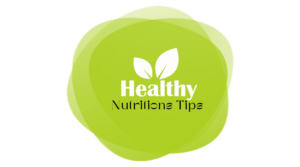In a world where first impressions are made in seconds, your hair often takes center stage. But achieving gorgeous, head-turning locks takes more than a simple wash and go. Welcome to the ultimate guide to caring for your hair. From understanding your hair type to mastering the secrets of styling, get ready to embark on a transformative quest for hair that’s not just beautiful, but healthy too.
What are the most common hair problems?
Hair problems can range from minor inconveniences to more serious problems that affect the health and appearance of your hair. Here are some common hair problems:
- Dandruff:
Dandruff is characterized by the shedding of dead cells from the scalp, often resulting in visible white flakes on the hair and shoulders. It can be caused by a variety of factors, including yeast overgrowth on the scalp.
- Dry hair:
Dry hair lacks moisture and can appear dull, brittle and frizzy. This can be due to factors such as excessive washing, the use of harsh hair products or exposure to environmental factors such as sun and wind.
- Greasy hair:
Greasy hair occurs when the scalp produces excess sebum, making hair look greasy shortly after washing. This can be due to genetics, hormonal imbalances or excessive washing.
- Hair loss (alopecia):
Hair loss can have many causes, including genetic, hormonal, medical and drug-induced. It can manifest itself as thinning hair, receding hairline or even baldness.
- Split ends:
Split ends occur when the hair shaft is damaged and splits into two or more parts. This is often the result of excessive heat styling, chemical treatments and a lack of regular cuts.
- Frizz:
Frizzy hair is characterized by unruly, rough, unruly strands. They are often caused by humidity, excessive heat styling or lack of moisture.
- Hair thinning:
Hair thinning is different from complete hair loss and usually involves a reduction in hair density and volume. It can be caused by a variety of factors, including age, genetics and hormonal changes.
- Brittle hair:
Brittle hair is prone to breakage and can feel rough and brittle. This is often due to excessive heat, aggressive hair products and lack of proper care.
- Scalp irritation:
Scalp irritation can manifest itself as redness, itching, burning or flaking. It can be caused by conditions such as eczema, psoriasis or an allergic reaction to hair care products.
It’s important to identify the specific hair problems you’re facing so you can take targeted action to remedy them.
How can you take care of your hair to avoid any problem?
To care for your hair, you need to adopt good habits, use the right products and understand your hair’s specific needs. Here’s a step-by-step guide to help you care for your hair:
1- Identify your hair type and needs:
Start by determining your hair type (straight, wavy, curly) and its specific characteristics (thickness, porosity, etc.). This will help you choose the right products and techniques.
2- Choose the right shampoo and conditioner:
Opt for a shampoo suited to your hair type and concerns (volumizing, moisturizing or color-safe). Follow with a conditioner that provides the moisture and nutrition you need without weighing your hair down.
3- Shampooing:
Wash your hair 2-3 times a week, or according to your hair type and lifestyle. Gently massage your scalp while shampooing to promote blood circulation and remove dirt and excess sebum.
4- Conditioning:
Apply conditioner mainly to the ends of your hair to avoid overloading your scalp. Use a wide-tooth comb to distribute the conditioner evenly. Leave on for a few minutes before rinsing with cool water to seal cuticles.
5- Deep conditioning and treatments:
A dry hair care routine is designed to restore moisture, enhance shine and improve the overall health of your hair. Once a week, treat your hair to a deep-conditioning mask or treatment to moisturize and repair. Look for products containing ingredients such as shea butter, argan oil or keratin.
6- Avoid heat:
Minimize the use of heated styling tools such as flat irons and curling wands. If you must use them, apply a heat protection spray to protect your hair from damage.
7- Air-dry your hair whenever possible:
Whenever possible, let your hair air-dry to reduce heat exposure. If you’re in a hurry, use the lowest setting on your hairdryer.
8- Regular cuts:
Plan regular cuts every 6 to 8 weeks to get rid of split ends and keep your hair healthy.
9- Scalp care:
Keep your scalp healthy. If you have dandruff, use dandruff shampoos and treatments to treat this condition.
10- Protective hairstyles:
Try protective hairstyles like braids, twists or buns to reduce manipulation and exposure to environmental stressors.
11- Hydration and nutrition:
Stay hydrated and maintain a balanced diet rich in vitamins, minerals and proteins. Nutrients such as biotin, vitamin E and omega-3 fatty acids contribute to hair health.
12- Use silk or satin accessories:
Sleep on a silk or satin pillowcase to minimize friction and prevent hair breakage.
13- Be gentle:
Treat your hair gently to avoid unnecessary damage. Use a wide-tooth comb to detangle hair, starting at the ends and working your way up slowly.
14- Limit chemical treatments:
Minimize the use of harsh chemicals such as dyes and relaxers, as they can weaken your hair’s structure over time.
15- Avoid stress:
Manage your stress with relaxation techniques such as meditation, yoga or deep breathing, as stress can have a negative impact on the health of your hair.
Don’t forget that consistency is essential. By adopting a hair care routine tailored to your hair type and needs, you’ll achieve healthier, more radiant hair over time.
Conclusion
Your hair isn’t just an accessory; it’s a constantly evolving masterpiece that tells your story. By mastering the art of hair care, you give yourself the means to show the best version of yourself. Thanks to the information presented in this article, you now have the tools you need to adopt a hair care routine that’s not just about looks, but about taking care of yourself, feeling confident and embracing your natural beauty. So enter the world of luxurious hair – your hair journey begins now.




